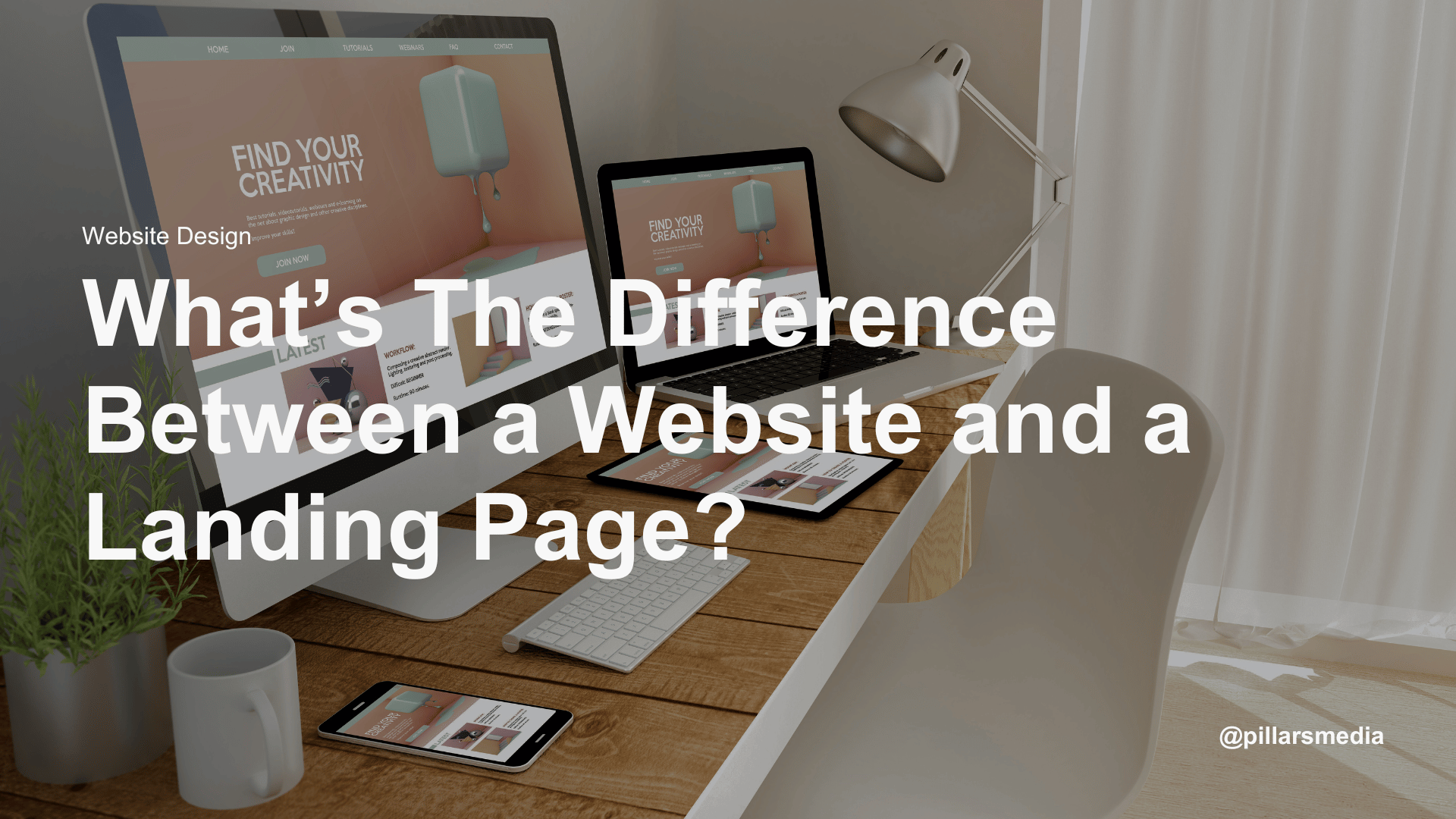The main difference between a website and a landing page is that a website consists of multiple pages with extensive information, whereas a landing page is a single page focused on delivering one main message.
Understanding the nuances between a website and a landing page can be the key to unlocking effective digital marketing strategies. While both serve crucial roles in the online ecosystem, they are not interchangeable.
This blog post aims to demystify the distinctions between a website and a landing page, providing clear definitions, purposes, and practical applications for each.
What is a website?
A website is a collection of web pages hosted on a single domain. It serves as the digital hub for a business, organization, or individual, offering comprehensive information about their services, products, or personal brand.
Think of it as the online equivalent of a physical storefront, showcasing everything a business has to offer.
Key features of a website:
- Home page: The central hub that provides an overview of the website’s content.
- Navigation: Menus and links that guide visitors to various sections and pages.
- Multiple pages: Can include about us, services, products, blog, contact, and more.
- Content-rich: Includes text, images, videos, and other multimedia elements.
- SEO-friendly: Optimized for search engines to attract organic traffic.
- Interactive elements: Forms, chatbots, and social media integrations.
Websites are designed to provide a comprehensive user experience, allowing visitors to explore and engage with various types of content.
They are essential for establishing an online presence, building brand authority, and fostering long-term customer relationships.
What is a landing page?
A landing page is a standalone web page designed with a single focused objective, usually aligned with a marketing campaign. Its primary goal is to convert visitors into leads or customers by encouraging them to take a specific action, such as filling out a form, downloading an ebook, or making a purchase.
Key features of a landing page:
- Focused content: Tailored to a specific audience and goal.
- Minimal navigation: Often lacks a full menu to avoid distractions.
- Call to Action (CTA): Clear, compelling prompts for the desired action.
- Conversion-oriented: Designed to maximize visitor-to-lead or visitor-to-customer conversions.
- A/B testing: Often used to test different versions to optimize performance.
- Tracking and analytics: Equipped with tools to measure effectiveness and ROI.
Landing pages are instrumental in targeted marketing efforts, providing a streamlined path for visitors to complete a specific action.
They are used in various campaigns, such as email marketing, PPC ads, and social media promotions.
Differences between a website and a landing page
- Purpose
- Structure
- Navigation
- Content
- SEO
- Interactivity
- Usage
1. Purpose
A website is designed to provide comprehensive information and engage visitors through various types of content. In contrast, a landing page is focused on driving specific actions and conversions, such as signing up for a newsletter or making a purchase.
2. Structure
Websites are composed of multiple pages, each covering different aspects of a business or service. These pages include a homepage, about us, services, products, blog, and contact pages. A landing page, however, is a single page dedicated to one objective, often related to a marketing campaign.
3. Navigation
Websites typically have extensive navigation options, with menus and links guiding visitors to different sections. Landing pages minimize or eliminate navigation elements to keep visitors focused on the main call to action (CTA).
4. Content
The content on a website is varied and rich, covering multiple topics and providing detailed information about the business. On the other hand, a landing page contains focused and concise content directly related to a single campaign or message.
5. SEO
Websites are optimized for organic search traffic, aiming to attract visitors through search engines. Landing pages are optimized for campaign performance, with a specific emphasis on conversion rates.
6. Interactivity
Websites often include various interactive elements such as forms, chatbots, and social media integrations to engage visitors. Landing pages primarily feature CTAs and forms designed to prompt immediate action from visitors.
7. Usage
Websites are essential for establishing an online presence and building long-term authority. They offer a broad platform for engagement and information sharing. Landing pages are used to drive specific marketing goals, such as lead generation or sales, by providing a streamlined user experience focused on conversion.
Website and landing page design agency in Malaysia
In summary, both websites and landing pages play crucial roles in digital marketing. Websites provide a holistic platform for engaging with your audience while landing pages offer targeted solutions for driving specific actions.
At Pillars Media, a website design agency in Malaysia, we specialize in crafting both comprehensive websites and high-converting landing pages. With our experience working with global clients, we understand the unique needs of businesses and can tailor our solutions to meet your goals.
Ready to elevate your digital presence? Contact us at Pillars Media to learn how we can help you design a website or landing page that drives results.
You Asked, We Answered
“You Asked, We Answered” is one of our content segments where we collect questions related to digital marketing, website design, leads generation, Google Ads, and more, from different platforms (Reddit, Quora, etc.), and answer them here!
We’ll be sharing a lot more on our website. If you are interested in reading more of these, let us know through our email!

